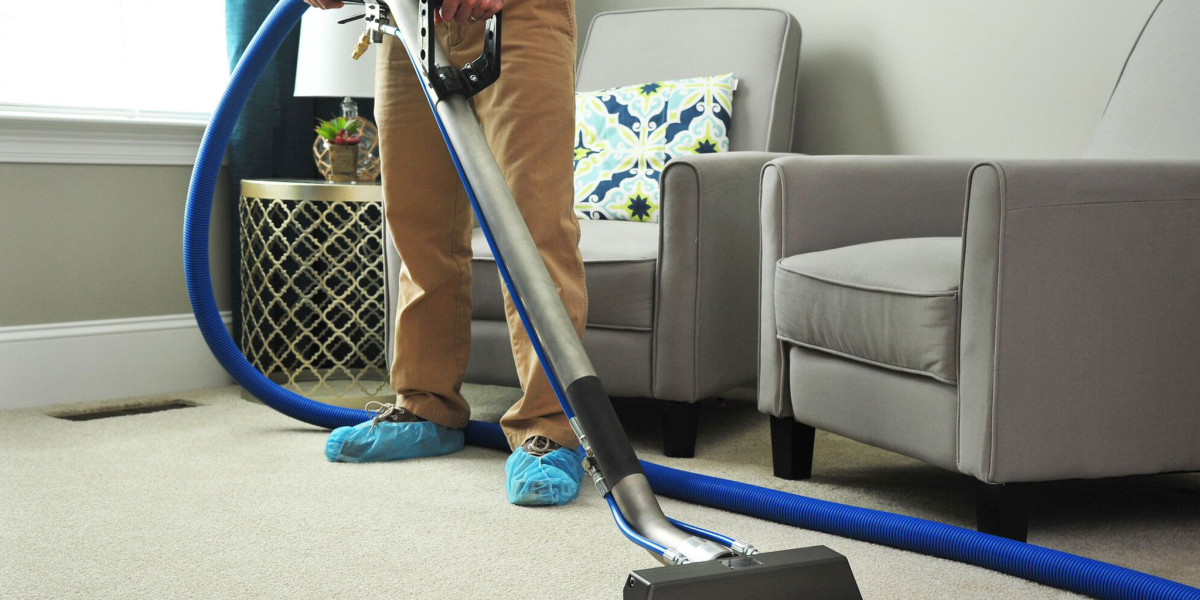When you step into a batting cage, what you feel under your feet matters almost as much as the bat in your hands. The surface is where players spend countless hours practicing swings, adjusting stances, and running drills. If the ground is uneven, slippery, or uncomfortable, it can affect performance and even lead to injuries. That is why Batting cage turf is considered one of the most important parts of any training setup.
A high-quality turf surface ensures players train in a safe, durable, and realistic environment. Whether in professional facilities, school practice areas, or private outdoor batting cages, the choice of turf can significantly impact training efficiency. It also plays a role in the overall life of the batting cage by protecting nets, frames, and flooring beneath.
But with so many turf options available today, how do you know what to look for? This article will walk you through the essential features that define top-quality batting cage turf, why they matter for player development, and how to evaluate turf options before making a purchase. We’ll also discuss how it connects with batting cage installation and long-term facility management.
Why Batting Cage Turf Matters
The turf in a batting cage is more than just a surface to stand on. It serves multiple purposes:
Performance: It provides grip and stability for hitters and pitchers, ensuring they can train effectively without slipping.
Safety: Good turf reduces the risk of injuries by cushioning joints and preventing uneven footing.
Durability: It protects the ground or concrete underneath and extends the lifespan of the overall cage structure.
Aesthetics: A clean, professional-looking turf creates a training environment that feels closer to game conditions.
Players train differently on high-quality turf compared to bare concrete or dirt. Consistency in surface texture helps them focus on mechanics rather than distractions. That’s why investing in batting cage turf is not just about looks—it’s about supporting long-term skill development.
Feature 1: Durability and Wear Resistance
The most critical factor in any batting cage turf is how well it can handle heavy use. Batting cages are high-traffic areas where players take thousands of swings, and the ground must absorb constant foot movement, bat drops, and ball impacts.
High-quality turf is typically made from polyethylene or nylon fibers designed to withstand abrasion. Polyethylene provides a softer feel underfoot, while nylon offers superior durability for areas with extreme wear. For batting cages, a blend of both materials often provides the best performance.
Durability also depends on turf weight and density. Denser fibers resist flattening, maintaining a natural look and feel even after years of use. This ensures that players experience consistent footing session after session.
Feature 2: Realistic Playing Surface
Training on turf should mimic real game conditions. If the surface feels unnatural, players may struggle to transfer their practice performance to real games. Good batting cage turf provides a balance between cushioning and firmness.
Cushioning protects joints, especially during long training sessions.
Firmness ensures stability for hitters and pitchers, allowing for proper mechanics.
Some turfs are specifically designed with in-fill systems (sand or rubber pellets) to replicate the feel of natural grass. Others use thicker fiber construction to achieve the same effect without loose particles. Both options can work, but consistency is key.
Feature 3: Shock Absorption and Safety
Safety is one of the top reasons why coaches and facility owners invest in batting cage turf. Players spend hours moving, pivoting, and adjusting their stances. Without proper shock absorption, repetitive stress can lead to knee, ankle, or back injuries.
Quality turf integrates padding beneath the surface. Some models come with built-in foam backing, while others require separate padding during installation. Regardless of method, a good batting cage should always reduce impact stress on athletes.
This feature is especially important for outdoor batting cages, where turf must handle not only foot traffic but also environmental wear from weather conditions.
Feature 4: Traction and Grip
Slipping during a swing or pitch is one of the quickest ways to ruin a training session and potentially cause injury. That’s why turf traction is so important.
Quality batting cage turf uses textured fibers to provide grip without being overly abrasive. The goal is to allow shoes and cleats to dig in slightly for stability while still enabling smooth pivots. Poor turf can either be too slick or too rough, both of which affect training negatively.
Feature 5: Easy Maintenance and Longevity
Unlike natural grass, turf doesn’t require watering, mowing, or constant upkeep. However, not all turfs are equal when it comes to maintenance. Good batting cage turf is designed for easy cleaning and quick recovery after use.
Durable fibers spring back after being stepped on, preventing “worn paths” from forming in high-traffic areas. Some turf products also come with antimicrobial treatments to resist bacteria buildup, a common issue in enclosed batting cages.
When paired with professional batting cage installation, high-quality turf can last years with minimal upkeep, making it a smart investment for schools, training centers, and private users alike.
Feature 6: Weather Resistance for Outdoor Use
If you’re setting up outdoor batting cages, your turf needs to withstand exposure to sun, rain, and temperature changes. UV resistance is especially important to prevent fibers from fading or breaking down under sunlight.
Water drainage is another factor. Turf with built-in perforations ensures rainwater flows through quickly, preventing puddles that can damage the surface or disrupt training. High-quality outdoor turf also resists mold and mildew, making it reliable year-round.
Feature 7: Size and Customization Options
Every batting cage has different dimensions, and turf needs to fit accordingly. Many suppliers offer custom sizing to cover the exact footprint of your cage. Some also provide pre-cut turf mats for pitchers’ mounds, home plates, or walkways.
Custom turf not only looks more professional but also reduces seams and overlaps, which can wear out faster over time. When investing in turf, it’s worth considering a full package that covers every section of your batting cage.
Feature 8: Compatibility with Other Batting Cage Equipment
The best turf works in harmony with other batting cage components. For example:
Batting cage netting hangs above, but balls constantly bounce and roll on the turf. A high-quality surface prevents damage and ensures consistent bounce.
Turf pairs with rubber home plates and pitching mats, giving hitters and pitchers the right footing.
In multi-sport facilities, turf can double as a surface for soccer, lacrosse, or strength training.
When planning your batting cage installation, consider how the turf integrates with the overall layout.
Feature 9: Professional Appearance
While performance and safety come first, appearance also matters. A professional-looking batting cage turf boosts confidence and creates a motivating training environment. Coaches know that players take practice more seriously when the setup feels close to a real game field.
Bright green, realistic fibers give the space a polished look, whether indoors or outdoors. Turf can also be customized with logos, lines, or color sections to suit team branding or training needs.
Installation Considerations
Choosing the right turf is only half the job. Proper batting cage installation ensures the turf performs as expected. Poor installation can lead to wrinkles, uneven areas, or drainage problems. Professional installers measure, cut, and secure turf in a way that maximizes both performance and longevity.
For outdoor setups, groundwork preparation (grading, base material, drainage) is critical. Indoors, padding and adhesive systems ensure the turf stays in place during heavy use. Working with experts helps protect your investment.
Cost vs. Value
Quality batting cage turf is not the cheapest part of building a training facility, but it offers long-term value. By protecting players, extending the life of equipment, and reducing maintenance costs, good turf pays for itself over time.
Lower-quality turf may save money upfront but usually wears out faster, leading to replacement costs. It can also create unsafe conditions, which are far more costly in the long run. For serious players and organizations, investing in premium turf is the smarter choice.
Conclusion
The surface beneath your feet during practice may not always get the attention it deserves, but it is one of the most critical parts of a batting cage. Choosing the right Batting cage turf means more than just aesthetics. It impacts safety, performance, and long-term durability of the entire training setup.
From durability and shock absorption to weather resistance and professional appearance, each feature plays a role in how effective and reliable turf will be. When paired with proper batting cage installation and complemented by equipment like nets and frames, turf transforms a simple cage into a professional-grade training environment.
For players who want to train seriously, for coaches who want safe and efficient facilities, and for organizations looking for long-term value, quality turf is not an option—it’s a necessity.
FAQs
1. How long does batting cage turf usually last?
High-quality batting cage turf can last 5–10 years depending on usage, maintenance, and whether it’s installed indoors or outdoors. Denser fibers and professional installation extend longevity.
2. Can I install batting cage turf myself?
While DIY installation is possible, professional batting cage installation is recommended. Experts ensure the surface is level, seams are secure, and drainage is adequate, which directly affects performance and safety.
3. What’s the difference between indoor and outdoor batting cage turf?
Indoor turf focuses on comfort, shock absorption, and aesthetics, while outdoor turf requires UV resistance, water drainage, and weatherproofing. Choosing the wrong type can reduce performance and lifespan.
4. Does batting cage turf require maintenance?
Yes, though much less than natural grass. Regular brushing, occasional sanitizing, and debris removal keep turf looking and performing its best. Proper upkeep prevents fiber flattening and extends life.






